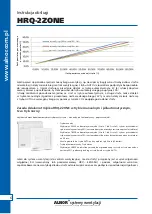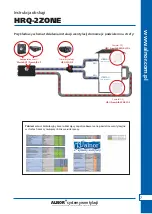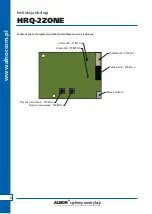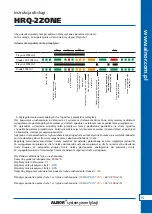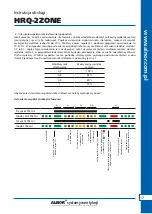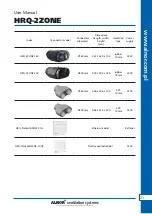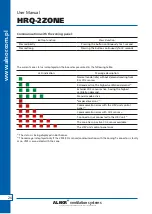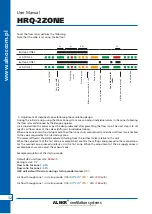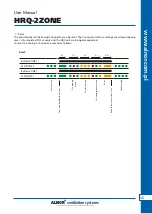
The Alnor Zone air distribution system is based on the HRQ-2ZONE zoning T-connector, which divides the
supply ventilation into zones based on the current demand. The communication between the T-connector
and the HRV unit is wireless, therefore the T-connector may be installed separately from the air handling
unit.
The dampers installed in the T-connector enable a precise (up to 1 m3/h), smooth division of fresh air
between individual zones based on the current demand. A symmetrical design of the T-connector ensures
an equal air distribution with minimum resistance. The ventilation demand calculation is based on the CO2
concentration in individual zones. Why ventilate empty rooms? If the household members are not in their
bedrooms during the day, the ventilation there is reduced to a minimum. Only the minimum airflow rate
remains.
A standard method of air division is to split the supplied air into a residential zone (living room, day rooms,
office) and a sleeping zone (bedrooms, children’s rooms). The CO2 concentration sensors (at least one
per zone) constantly monitor the presence of household members and the air quality, sending a signal
about the required ventilation in a given zone when necessary. The unit control is fully automatic and does
not require user activity. In addition, if only one of the zones is being ventilated, the T-connector sends
information to the air handling unit to proportionally reduce the airflow rate, thus significantly reducing the
power consumption costs.
• HRU-PremAIR-CF, HRU-SlimAIR-CF HRV unit with Constant Flow control system;
• HRQ-2ZONE-160(200) zoning T-connector;
• the HRQ-PremAIR-SENS-CO2 / HRQ-SlimAIR-SENS-CO2 wireless CO2 sensor or
the HRQ-PremAIR-SENS-I-CO2 / HRQ-SlimAIR-SENS-I-CO2 flush-mounted CO2 sensor
(at least two are needed, one per zone);
ALNOR
®
ventilation systems
is a legally protected trademark and technical patent. All rights reserved.
20
w
w
w
.al
nor
.c
om.
pl
User Manual
HRQ-2ZONE
Alnor Zone

